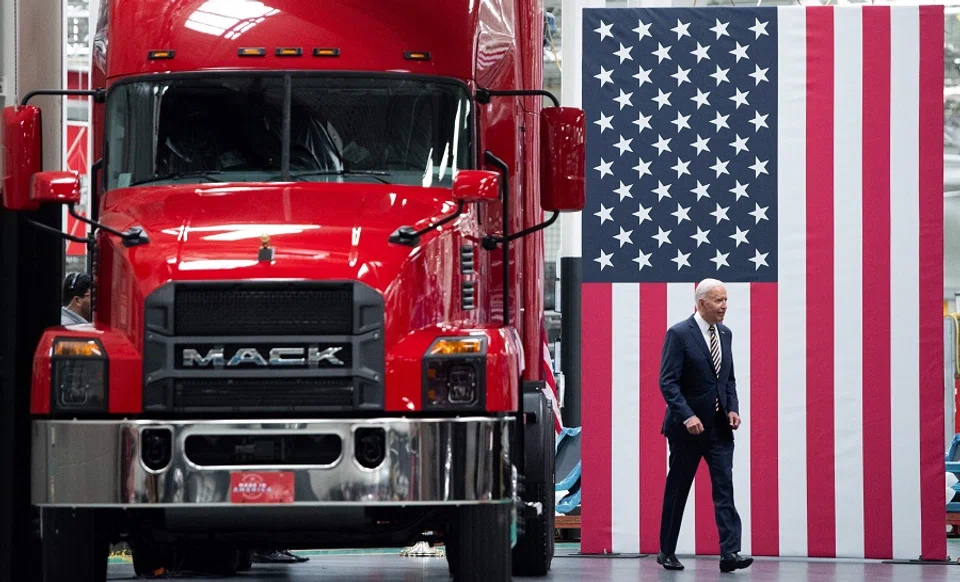Could China-US trade relations be thawing?
High-level trade and foreign policy officials from the US and China have articulated their views recently on implementing the phase one trade deal and hopes for cooperation amid a state of strategic competition. Will more of such sessions help to chip away at the great wall of mistrust that has been built between the US and China?

Less than ten days into the month of October, higher-ups from China and the US have already had three important exchanges of views. These interactions are seen as the start of a new chapter in the prolonged stalemate in China-US trade relations.
First, a general background of existing trade ties between China and the US. China-US trade relations experienced a very difficult period when Trump was US president. This was because Trump believed that the US did not receive fair treatment when it traded with China, and this has led to a high trade deficit, outflow of industries and an increase in the domestic unemployment rate. Thus, Trump imposed higher trade tariffs on China's imports and demanded that China boost its import of American agricultural products such as barley to reduce the trade deficit. Trump also put forth the idea of decoupling from China and hoped that China-based American enterprises would relocate their manufacturing bases back to the US.

Following which, China and the US signed the phase one trade agreement in which China agreed to increase its purchase of US goods and continue to promote domestic reforms. The US also agreed not to further raise tariffs. The scope of the phase one trade agreement is limited. Some issues that the US is concerned about, including China's subsidy policies for foreign trade and dumping problems as a result of overcapacity, were put off to be tackled in a phase two trade agreement.
Statistics from the Peterson Institute for International Economics found that at present, China has only purchased 69% (Chinese imports) of the amount of US goods it said it would, which is still some distance away from the amount agreed.
Implementation of phase one trade deal impeded by several factors
But many things happened after the first trade deal was signed. In terms of trade, the Covid-19 pandemic disrupted many production lines and affected the stability of China's industrial and supply chains. Later, the US put over 300 Chinese enterprises on its Entity List and restricted Chinese enterprises from gaining technology and information from the US. Also, non-trade factors such as human rights issues in Xinjiang and Hong Kong, sovereignty issues concerning Taiwan and the South China Sea, and the US's assistance to Australia in acquiring nuclear-powered submarines have damaged China-US relations as well.
As a result of these complications, the China-US trade deal was not properly executed. Statistics from the Peterson Institute for International Economics found that at present, China has only purchased 69% (Chinese imports) of the amount of US goods it said it would, which is still some distance away from the amount agreed.

Objectively speaking, the Covid-19 pandemic affected China's purchasing plan. Subjectively speaking, China also became less motivated to abide by the agreement after the US rolled out a series of unfriendly China policies after the agreement was signed. On the other hand, the US thinks that China fell behind on buying enough US products and failed to make substantial improvements in the issues that the US is concerned with. Hence, it is necessary for both parties to communicate and negotiate with each other again.
With these points in mind, we can now discuss the three exchanges. First, the remarks made by US Trade Representative Katherine Tai at the Center for Strategic and International Studies on 4 October. This is one of the relatively clearer explanations of the US's China trade policy since the Joe Biden administration was installed in January.

Tai's remarks brought across three important messages. One, China and the US will conduct negotiations on the basis of the existing phase one agreement and the US will "enforce" China's "commitments" to the deal. A phase two agreement seems unlikely. Two, the US will "start a targeted tariff exclusion process" if domestic enterprises require that to be done. Three, the US will "use the full range of tools we have and develop new tools as needed" to address China's non-market trade practices such as the non-competitiveness of state-owned enterprises.
Alliances and competition mode to stay
Second, US national security adviser Jake Sullivan's meeting with Chinese top diplomat Yang Jiechi in Zurich, Switzerland, on 6 October. Two key points are apparent from US news reports: first, pushing high-level exchanges and trying to prevent the China-US competition from turning into conflict. Second, there has been no significant change in the basic direction of US policy towards China, which is mainly to strengthen alliances and drive competition with China. And, China does not agree that it is in a competition with the US, but stresses that cooperation would be good for China, the US, as well as other countries.
The US is willing to gradually remove tariffs in exchange for China fulfilling the phase one deal, especially the part about purchasing US products.

Finally, on 8 October, Tai held a video conference with Politburo member Liu He, China's principal representative in the China-US economic dialogue. Both recognised the need to strengthen economic and trade exchanges and cooperation, and exchanged views on the implementation of the China-US Economic and Trade Agreement, where each expressed their concerns, and agreed to continue communicating through negotiations.
From these three exchanges, the pragmatic direction of China-US trade relations is clearly felt. The US is willing to gradually remove tariffs in exchange for China fulfilling the phase one deal, especially the part about purchasing US products. This would ease the pressure of domestic inflation and take care of the livelihoods in agricultural states, which would be a great help to the mid-term elections next year.
Pragmatism and caution will drive relations
And when it comes to differences, the US can continue to communicate with China, and join with other allies to exert pressure on China. China has officially applied to join the Comprehensive and Progressive Agreement for Trans-Pacific Partnership (CPTPP), and while the US is not a member, its allies Japan, Australia, and Canada, definitely intend to act on the US's behalf and get China to make major changes in state-run enterprises and subsidy policies, because they want the same thing as the US.

With some tariffs being lowered, China will probably also be willing to fulfil the trade agreement, because China has recovered from the pandemic with outstanding results, and it is able to make policy adjustments to meet the purchasing quota in the trade agreement. More importantly, there is indeed high demand for soy beans and barley in China.
Many commentaries in Chinese media are positive about these three exchanges, but suggest the Chinese government observes the US's actions and words. The same logic is probably going around US political circles, because since the Trump administration, there has been a crisis of trust between China and the US - each side doubts what the other says, and would rather not cooperate than give in easily. This is like the prisoner's dilemma in game theory - even if both sides know that both will benefit if they work together and both will get hurt if they compete, without a foundation of trust, they will not be able to find a suitable point of cooperation.
Now, with this dialogue, China and the US are willing to push for high-level talks, which is the best step towards cooperation. Only with sufficient communication to understand each other's positions and difficulties can there be space for compromise that both sides can accept.
...the US will continue to exert pressure on China in technological development, while "stealing", "theft", and "copying" will continue to be frequent keywords in the China-US trade relationship.

Of course, the US will not simply watch China's rise and not respond. As the US describes its relationship with China as strategic competition, the US will continue to exert pressure on China in technological development, while "stealing", "theft", and "copying" will continue to be frequent keywords in the China-US trade relationship.
To get a hand on the high-tech industry supply chain, the US has conducted an overall assessment of semiconductors and batteries, and there is even talk that it has asked major semiconductor companies to submit a list of sensitive clients. These policies show that the US wants to maintain its leading position in the China-US competition.
How the China-US trade relationship finds its balance between competition and cooperation would depend on the political wisdom and pragmatic diplomacy of the leaders of both sides. Global climate change will be the next platform where China and the US can communicate; both sides have often found good opportunities to cooperate amid larger global crises.



![[Photos] Fact versus fiction: The portrayal of WWII anti-Japanese martyrs in Taiwan](https://cassette.sphdigital.com.sg/image/thinkchina/3494f8bd481870f7c65b881fd21a3fd733f573f23232376e39c532a2c7593cbc)

